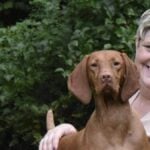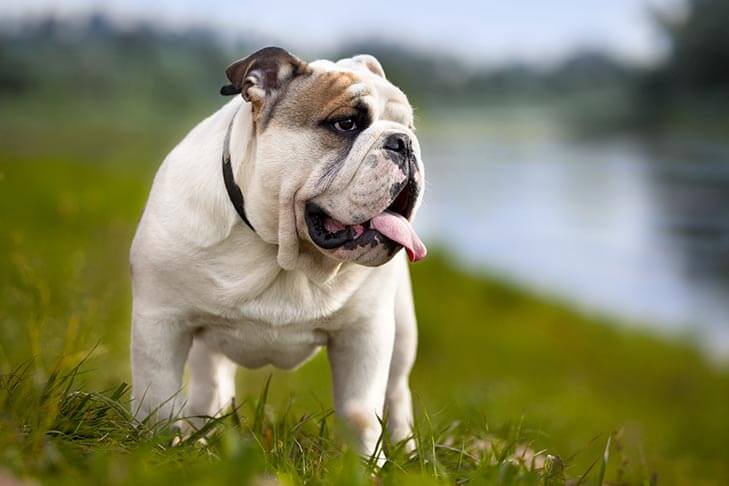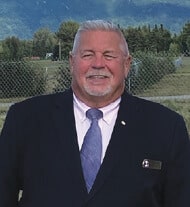
Home » Insights from Non-Sporting Group Judge Daniel J Smyth, Esq

Interview with Non-Sporting Group Judge Daniel J Smyth, Esq
I have owned show dogs since 1978 and began judging Hound breeds in 1995. My first Group was the Hound Group, followed by the Non-Sporting Group. I am currently almost done with the Toy Group, and I judge 11 Sporting breeds and one Terrier breed.
I was the original Delegate for the Petit Basset Griffon Vendeen Club of America for six years and moved on to the Burlington County Kennel Club of New Jersey where I currently remain as their Delegate. This totals 30 years as a Delegate. In 2019, I was elected a member of the Board of Directors of the American Kennel Club, serving my first term.
My husband, Rob, and I recently relocated to the Palm Springs area of California where I was accepted as a member of the Palm Springs Kennel Club. I have a daughter, Mandy, a former Junior Handler, her husband, Brian, and a wonderful granddaughter, Elle Rose, and their rescue Greyhound, Emmett, all residing in Boston.
I belong to multiple Breed Clubs, a Group Club, several Local Clubs and All-Breed Clubs, and three Parent Clubs. My interests have always been improvement of our clubs and judging structures from the top down, and evenly and fairly accommodating the needs of all members of the AKC family.
I still maintain a law practice in New Jersey and spend a lot of time in airports going to meetings or judging assignments. I hope to be seeing you and your show dog sometime in the future.
Where do I live? How many years in dogs? How many years as a judge?
Daniel J Smyth: At the current time, I am bi-coastal in that I still maintain official residence in New Jersey where I have a law practice and am the Delegate for Burlington County Kennel Club, Moorestown, New Jersey. One year ago, we purchased a home at 42687 Capri Drive, Bermuda Dunes, California 92203. I have been active in dogs for approximately 42 years; however, my show and breeding experience began about 40 years ago. I became a judge of my first breeds in 1995 and have enjoyed judging dogs for the last 27 years.
What is my original breed? What is/was my kennel name?
Daniel J Smyth: My original judging breeds were the Basset Hound and PBGV. Personally, I have owned a Rat Terrier, several Smooth Dachshunds, Chinese Cresteds, Irish Setters, and a Weimaraner. I became involved with PBGVs shortly after they started to arrive in this country, and was active in the recognition of the breed from almost the beginning. I was the first Delegate for the PBGVCA. My current dog is a PBGV rescue named “Piper.” The Basset kennel is Old York Bassets and the PBGV kennel is designated under L’Avocat (French for The Lawyer).
Can I list a few of the notable dogs I’ve bred? Any performance or parent club titles?
Daniel J Smyth: The Basset kennel began with Ch. Beaujangles Boomerang Showoff. The Bassets were shown primarily by Joy Brewster and Kitty Burke, the most notable of which was Old York’s Dallas Alice. This was followed by the finishing of about 20 Basset championships, all of which are notable to me.
The PBGV line, which I started with co-owner Dottie Allen under the L’Avocat designation, began with an English import, Ch. Waklyn’s Topaze, who was the foundation bitch of a successful line that is still developing today. The most notable being Ch. L’Avocat L’Ourson Rouge (nickname Bam Bam) who showed at Westminster twice in his life, sired 14 offspring (a majority show champions), and who passed away in his sleep recently at the age of 18-½. One of my PBGVs earned a beginning hunt title; however, almost all were conformation events. I am proud to say that many of “Bam Bam’s” offspring enjoy agility and hunt titles, and are strong in scentwork activities.
What are some of the qualities I most admire in the Non-Sporting Breeds?
Daniel J Smyth: I like the individuality of each and every Non-Sporting Group member. Whereas the other Groups are somewhat interrelated breeds having many of the same physical, characteristic, and personality qualities and purposes, each of the individual Non-Sporting breeds is just that… individual! They have individual histories, purposes, movement, etc. They also span the spectrum of appearance from the Poodle to the Bulldog; Keeshond and Chow to the Norwegian Lundehund and the Xoloitzcuintli. Each and every one is beautiful in its individual way, having its own proud history and purpose.
Have I judged any Non-Sporting Breed/Group Specialties?
Daniel J Smyth: In the last 23 years, I have judged Specialties in about 40 percent of the Non-Sporting breeds, since I first began judging a Non-Sporting breeds in 1999.
Can I speak to the overall quality of the more popular Non-Sporting Breeds/Varieties; Bulldog, French Bulldog, and Standard & Miniature Poodles?
Daniel J Smyth: I have been happy to watch the development and improvement of all of the Non-Sporting breeds since 2000. Of those mentioned, it has been a joy to watch the quality improve, which includes the specific breed handling by owners, the preciseness of the grooming of the Poodles as well as the overall movement and correct body types of the French and English Bulldogs. I am very happy that the French Bulldog has become one of America’s most popular breeds, and my heart smiles when I see a good quality Bulldog make its way up the ramp.
What about the overall quality of the more “vulnerable” breeds; Coton de Tulear, Finnish Spitz, Löwchen?
Daniel J Smyth: Not sure what you mean by “vulnerable” breeds other than perhaps low-entry breeds—certainly not the quality or health sustainability of the dogs. The Coton, despite its beautiful coat, came from a rugged environment where I doubt they had grooming parlors or hair dryers. I admire the several Finnish Spitz that I have seen, and I have awarded a beautiful specimen a Group One placement a short time ago. I see little question in the Löwchens as the exhibits I have seen are beautifully groomed, shown well, and worthy of strong consideration by the judges. If you are speaking of low-entry/popularity, that is a question that falls beyond my scope as a judge and is better directed to the parent clubs whom I know are wrestling with the issue.
Would I have any advice to impart to newer judges of the Non-Sporting Breeds who come from other Groups?
Knowing the purpose for which a breed was used, and how and why they developed to accommodate that, makes the overall evaluation and comparison to the standard much simpler.
Daniel J Smyth: I would advise all new judges coming to the Non-Sporting Group to realize the individuality of each breed. Get to know their purpose, their history, and their structure. Knowing the purpose for which a breed was used, and how and why they developed to accommodate that, makes the overall evaluation and comparison to the standard much simpler. Go to the seminars, watch the webinars, and buy the Canine College course where offered. Lastly, don’t forget to talk to the breeders; they have seen it all and will set you straight in a heartbeat. Know your standards and breed nuances, and always be kind and understanding to the exhibitors who have paid to show to you.
In my opinion, how do today’s exhibits compare with the Non-Sporting Dogs of the past?
Daniel J Smyth: My past is limited to a short period of 23 years, and I have always seen improvement. Overall, breeders are more knowledgeable, nutrition conscious, health aware, and concerned with the improvement of their breed. The Internet has made the sharing of information and education easy to attain, and in that regard, we all continue to move upward. The American Kennel Club has taken large strides toward improving educational opportunities, not only to judges but to breeders and those who would like to own one of the breeds. This has all resulted in strong improvement in the quality of the breeds.
Why do I think Non-Sporting Dogs can become such outstanding Show Dogs?
Daniel J Smyth: Non-Sporting Dogs are some of the strongest competitors in the ring already. In most regards they are outstanding show dogs. I don’t think they will or can “become.” I believe they “are” at that point already.
If I could share my life with only one Non-Sporting Breed, which would it be and why?
Daniel J Smyth: I am very fond of the Non-Sporting breeds, and I am not saying which ones I appreciate more as each has its own merits and appeal. If I were to share my life with a Non-Sporting Dog, and I just might yet, my personal choice from the Group would be the one most capable of loving me back. Probably only he or she and I would know.
Just for laughs, do I have a funny story that I can share about my experiences judging the Non-Sporting Group?
Daniel J Smyth: I always have fun when judging the Non-Sporting Group. The exhibitors are fun and good-natured, and they work hard to present their dogs in the best light. I appreciate their accepting nature of the results of my opinion, which may be different than tomorrow’s judge. However, I always find myself laughing at the antics of some of the pups, particularly puppy Bulldogs which kind of look up my leg and are thinking, “Wow, that’s a big guy!”
My most memorable story was hearing an owner settling a Bulldog on the ramp behind me while using his name, which she said was “Mr. Grumpy.” I turned around and just lost it, because he looked like an angry Winston Churchill minus the cigar—but he was as sweet as could be. I don’t remember how he did, but he gave me a smile that lasts even now as I type this. Sometimes winning isn’t everything.
